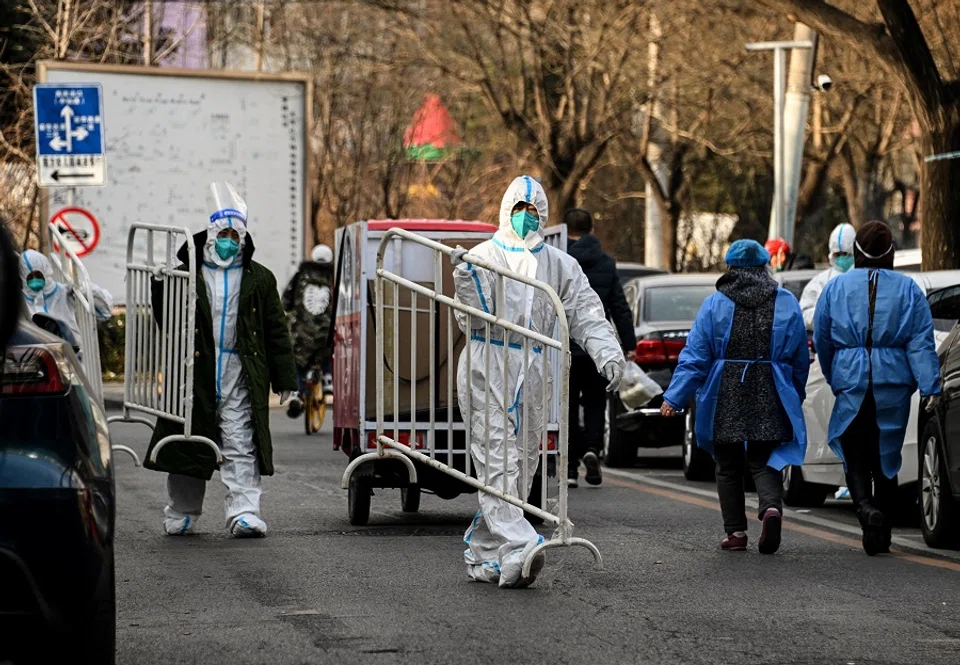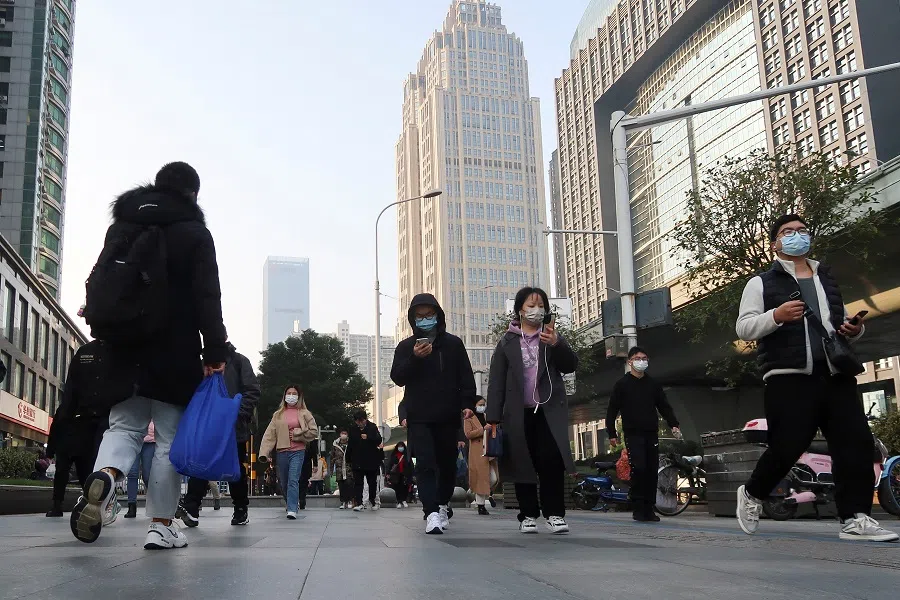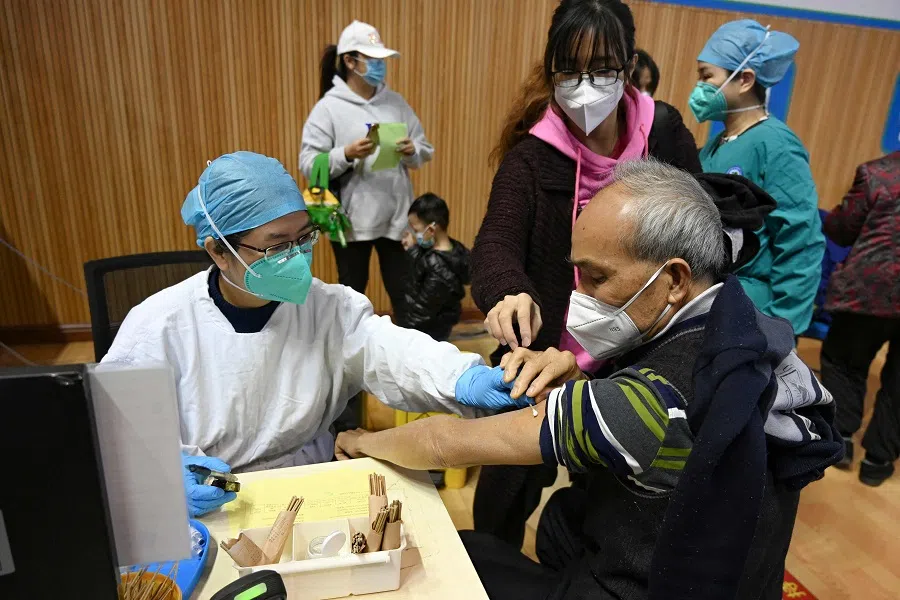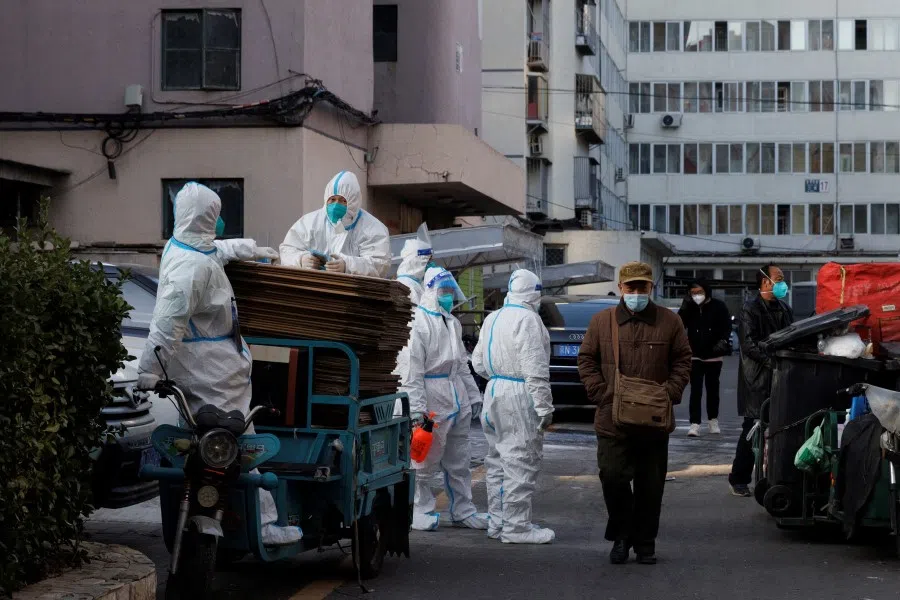China's reopening will not lead to a million deaths
Chinese academic Zhang Tiankan explains why some estimates that China's reopening without safeguards could result in 1.5 million to 2 million deaths is improbable if one looks at the facts. Such predictions could cause public alarm and mislead policy making.

International and domestic data show that the virulence and pathogenicity of the Omicron family variant are markedly weaker than the original Covid-19 strain and Delta variants, noted Tong Zhaohui, a respiratory and critical illness expert and director of the Beijing Institute of Respiratory Medicine. He added, "Compared with the 2009 global influenza pandemic, the proportion of Omicron variant causing pneumonia or severe or critical illness is relatively low."
This implies that China's Covid policy will see a major shift towards reopening. However, it was previously estimated that a sudden U-turn on its zero-Covid policy could lead to 1.5 million to 2 million deaths. Such a prediction now seems rather far-fetched and a product of the uncertainty principle, which only serves to misguide policy making and scare the public.
Nature Medicine published an article in May claiming that China risked suffering over 1.5 million Covid deaths if it abandoned the zero-Covid policy without including safeguards such as strengthening vaccination campaigns and improving treatments. It was later thought that China's reopening might even lead to 2 million Covid deaths as the number of infections rose to more than 233 million.

Whether it is 1.5 million or 2 million deaths, the thought that a million people could die, naturally gives people immense pressure and silences everyone's thoughts about reopening and resuming normal life. No one wants to advocate reopening and be cast as a murderer or an accomplice knowing these numbers. It is akin to hanging a moral rock over everyone's head and putting a demon in everyone's heart - who dares to talk about reopening?
Instead of a million deaths, maybe even no deaths
But the problem is, will reopening really result in a million deaths?
This is only speculation and a hypothesis that has yet to be put to the test. For example, with increased vaccination rates, improved treatments and enhanced protection of at-risk groups, it is quite impossible for so many people to die. In fact, the actual death rate could be less than that for influenza.
From October to mid-December, Guangzhou reported 162,700 Covid cases, among which 90% were asymptomatic and four were critical and severe cases. No Covid death was reported.
Next, the hypothesis is drawn from a simulation of various parameters and extrapolated from past occurrences. When these parameters change and the pandemic also changes rapidly over time - that is, the pathogenicity of the coronavirus reduces and the rate of critical cases decreases - the number of deaths cannot be in the millions, and in fact, there may not even be any deaths.

This is evidenced by Guangzhou's Covid-19 outbreak. From October to mid-December, Guangzhou reported 162,700 Covid cases, among which 90% were asymptomatic and four were critical and severe cases. No Covid death was reported. This means that critical and severe cases only accounted for 0.0025% of the cases.
Furthermore, the cases did not result in additional pressure on existing medical resources as well. To top it off, this was the situation before vaccination campaigns were strengthened and treatments were improved. Thus, the theory that a million people could die if China reopens is not aligned with reality and is in fact alarmist.
'Dying with' versus 'dying of'
Besides, the previous Covid death tolls recorded cannot be considered accurate due to the difference in recording cases of people "dying with" and "dying of" Covid-19.
Currently, the death toll captures Covid patients who "died with" the coronavirus, which means including those who may have died of their underlying medical conditions. For instance, Beijing reported three Covid deaths in November, all of whom were elderly aged above 80. They had died of various underlying medical conditions, but were included in the Covid death toll as they had also been infected with the Omicron variant of the coronavirus.
From this perspective, it is not realistic to say that fully opening up would lead to a million deaths. Even if that were the case, the main cause would not be Covid - besides, there would not be such large-scale deaths.
Looking further, even if the lockdowns reduced Covid infections and deaths, they led to other excess deaths. Estimations by the World Health Organization show that from 1 January 2020 to 31 December 2021, there were a total of about 14.9 million Covid-related deaths (direct or indirect, known as excess deaths) globally, with a range of between 13.3 and 16.6 million.
Compared to 2019, the number of deaths among heart disease patients in 2020 and 2021 went up by 400,000, and cerebrovascular patients by 300,000, for a total increase of 700,000.

Indirect Covid-related deaths cover many factors, including those resulting from people being unable to get disease prevention and treatment due to lockdowns. There are many such deaths in China, but no exact figures. However, one set of data shows the problem.
Compared to 2019, the number of deaths among heart disease patients in 2020 and 2021 went up by 400,000, and cerebrovascular patients by 300,000, for a total increase of 700,000. These increased deaths are of course not totally due to Covid lockdowns, lack of treatment, or the lack of prompt treatment individually, but at least there is a link with the lack of prompt treatment due to Covid lockdowns.
The three years of Covid and controls have shown most clearly that full opening is the way to save the majority of people, so that hundreds of millions of people will not die and will live on to keep society going and take care of the high-risk group. In comparison with forecasting a million deaths on full opening, it goes without saying which is a bigger priority.
Protecting the vulnerable
But it seems that such comparisons cannot be drawn when it comes to lives, and so the minority high-risk group still needs to be protected, even while opening up for the majority. There are already many measures to protect the high-risk group, such as stepping up vaccinations for the elderly and those with underlying conditions - except for those who cannot be vaccinated - and bringing in more effective mRNA vaccines. Other measures include two booster shots for China's 254 million elderly, and reverse quarantine for elderly homes and communities, with closed-loop management so that only vaccinated people who test negative for Covid are allowed to move in and out.
The thing to watch out for is that some so-called scientific studies and forecasts are seriously out of step with reality, and would lead to public fear and mislead policy making, and throw the entire society into boundless disaster.

Also, there has been money pumped into healthcare and medicine, for example buying the oral medicine Paxlovid that eases severe symptoms for use in elderly homes and wards with severe Covid cases. Of course, another important measure is putting medical resources including funds, personnel, medicine and facilities into hospital beds and wards with severe Covid cases, reducing or lifting Covid testing, and not building makeshift hospitals. This last move alone would free up a significant amount of funds to treat critically ill patients.
The facts and logic should drive away the spectre of "a million deaths" on opening up. The thing to watch out for is that some so-called scientific studies and forecasts are seriously out of step with reality, and would lead to public fear and mislead policy making, and throw the entire society into boundless disaster.
This article was first published in Lianhe Zaobao as "'开放会死百万人'预测不靠谱".

![[Big read] Paying for pleasure: Chinese women indulge in handsome male hosts](https://cassette.sphdigital.com.sg/image/thinkchina/c2cf352c4d2ed7e9531e3525a2bd965a52dc4e85ccc026bc16515baab02389ab)



![[Big read] How UOB’s Wee Ee Cheong masters the long game](https://cassette.sphdigital.com.sg/image/thinkchina/1da0b19a41e4358790304b9f3e83f9596de84096a490ca05b36f58134ae9e8f1)